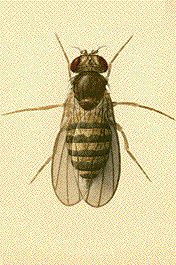Molecular evolution and neutral theory - Is polymorphism correlated with the rate of evolutionary change?

There have been a number of tests to test the two predictions:
The relation was examined in gel electrophoretic data for proteins. In 1991 McDonald and Kreitman compared silent and replacement events within one gene, alcohol dehydrogenase (Adh) in two closely related species of fruitfly (Drosophila ) like the one opposite. For the two species, they tested the neutral theory, by seeing whether, in one gene in a pair of species, the ratio of evolutionary rates for replacement and silent sites equals the ratio of polymorphisms for replacement and silent sites. The two ratios should be equal if all the changes are neutral.
• The first study, for Adh, contradicted the neutral prediction. There were too many replacement changes between the species relative to the polymorphisms within the species. McDonald and Kreitmanís explanation was that natural selection had favored certain amino acid changes in the evolution of the two species.
• Since their work, the same ratios have been measured in a number of other genes; but the results do not point to any simple conclusion. In three of the seven genes replacement changes are more frequent between the species; but in another three the ratios are about the same. The results suggest that some of the genes may be evolving more in the neutral manner and others showing more of a deviation from it: but it would take further work to establish this possibility.
The relation between evolutionary rates and levels of polymorphism are a promising line of research. It currently does not point to any simple conclusion - but that may be because there is no simple conclusion.
| Next |



